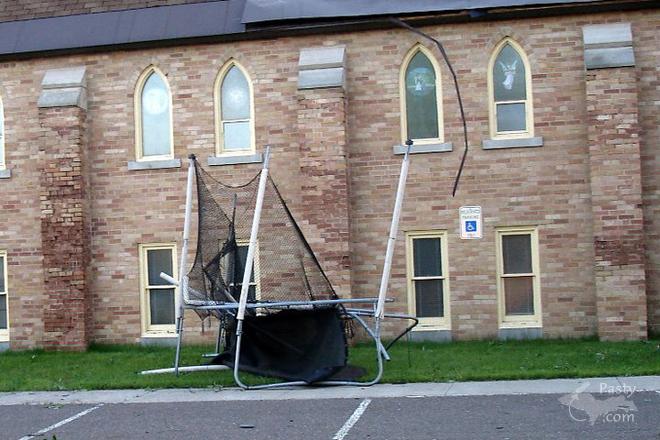By FRNash/PHX, AZ (Frnash) on Tuesday, July 5, 2011 - 12:14 pm:
Tornado or microburst?
While tornadoes do happen in the Arizona desert, they are pretty rare and usually quite weak.
Microbursts, on the other hand are much more common, causing far more damage in the Phoenix Metro area than tornadoes. There are typically several damaging microburst events each summer.
As a matter of fact, we have already experienced our first microburst damage of the year on Saturday, with the first monsoon season thunderstorm to strike the area after the record 118°F high temperature for the day:
From ABC15.com, Sunday July 3, 2011: Crews kept busy by Phoenix microburst.
Quote:"Residents were glad to have their power back Sunday after a microburst on Saturday left many in north Phoenix powerless overnight.
"Seventeen power poles were knocked down along 32nd Street during Saturday’s storm. Arizona Public Service crews went to work overnight and will be in the area through Monday replacing the old wooden poles with ones made of steel. The poles are meant to withstand 60-mile-per-hour winds. 'This microburst came from nowhere and it might have done the same thing to steel poles too,' said Damon Gross with APS."
Some definitions I have seen:
Quote:Downburst:
A downburst is defined as a strong downdraft with an outrush of damaging winds on or near the ground. If the swath is less than 2.5 miles, it is called a microburst. Microbursts are quick-hitting events and are extremely dangerous to aviation. Microbursts are sub-classified as dry or wet microbursts, depending on how much rain accompanies the microburst when it reaches the ground.
Quote:Microburst:
A microburst is a small, very intense downdraft that descends to the ground resulting in a strong wind divergence. The size of the event is typically less than 4 kilometers (2.5 miles) across. Microbursts are capable of producing winds of more than 100 mph causing significant damage. The life span of a microburst is around 5-15 minutes.
When rain falls below cloud base or is mixed with dry air, it begins to evaporate and this evaporation process cools the air.¹ The cool air descends and accelerates as it approaches the ground. When the cool air approaches the ground, it spreads out in all directions and this divergence of the wind is the signature of the microburst. In humid climates, microbursts can also generate from heavy precipitation.
¹ (This probably explains why such microbursts are so common in the Phoenix metro area, with the low humidity contributing greatly to the evaporation!)
Perhaps the sudden large temperature drop reported by Mary Drew at Pasty Central (Mdrew):"… the thermometer at my house, dropped from 84° to 67° in just a short time period." is a further clue to the character of this event!
I have also heard a microburst described as a large parcel of cool/cold air falling from a thunderstorm cell, which in calm wind conditions will yield a damage pattern much like the water splash seen from dropping a water-filled balloon.
With strong surface/boundary layer winds, the damage pattern may spread with the low level wind to resemble a water filled balloon dropped from a fast, low flying airplane, splayed out in the direction of the wind. The gusty, shifting surface winds typical near thunderstorm cells may also cause turbulent eddies that can induce a minor "spin" in the flying debris.















